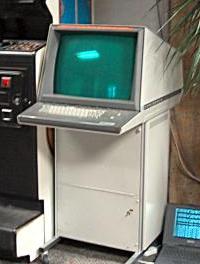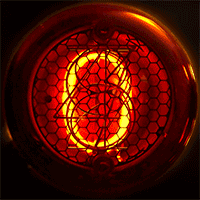Cathode ray tube
One of the earliest electronic displays is the cathode-ray tube (CRT), which was first demonstrated in 1897 and made commercial in 1922. [1] The CRT consists of an electron gun that forms images by firing electrons onto a phosphor-coated screen. The earliest CRTs were monochrome and were used primarily in oscilloscopes and black and white televisions. The first commercial colour CRT was produced in 1954. CRTs were the single most popular display technology used in television sets and computer monitors for over half a century; it was not until the 2000s that LCDs began to gradually replace them.
A derivative of CRTs were storage tubes, which had the ability to retain information displayed on them, unlike standard CRTs which need to be refreshed periodically. In 1968, Tektronix introduced the Direct-view bistable storage tube, which went on to be widely used in oscilloscopes and computer terminals. [2]
Monochrome CRT
1922 Monochrome cathode ray tube:

Color CRT
1954 Color cathode ray tube for the display of color television: [3]
Direct-View Bistable Storage Tube
1968 [2] The Direct-View Bistable Storage Tube CRT retains static information displayed upon it, written using a steerable electron beam that can be turned off. The DVBST was used in vector displays of early computers and in oscilloscopes.
















